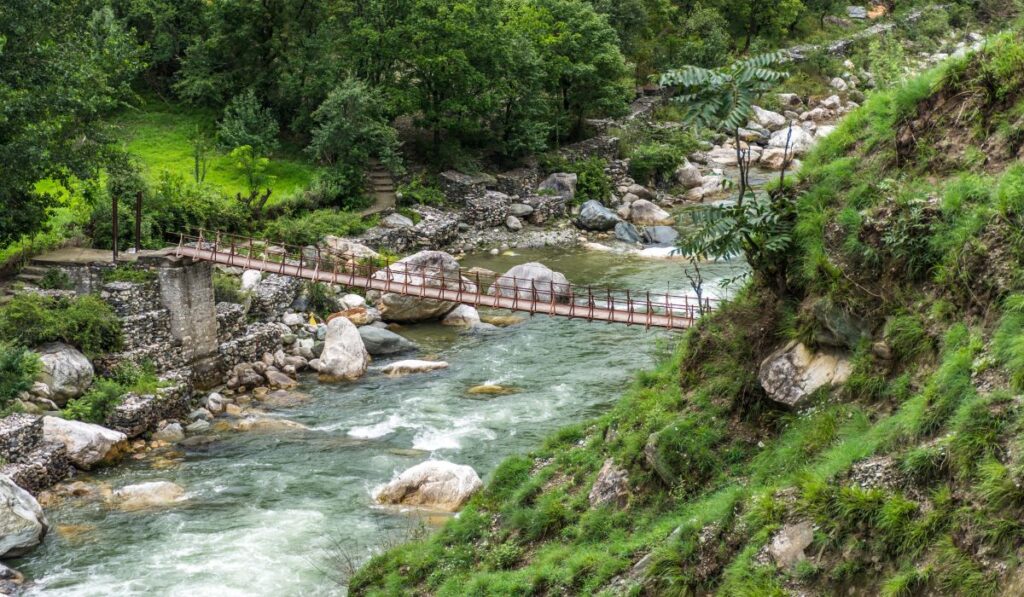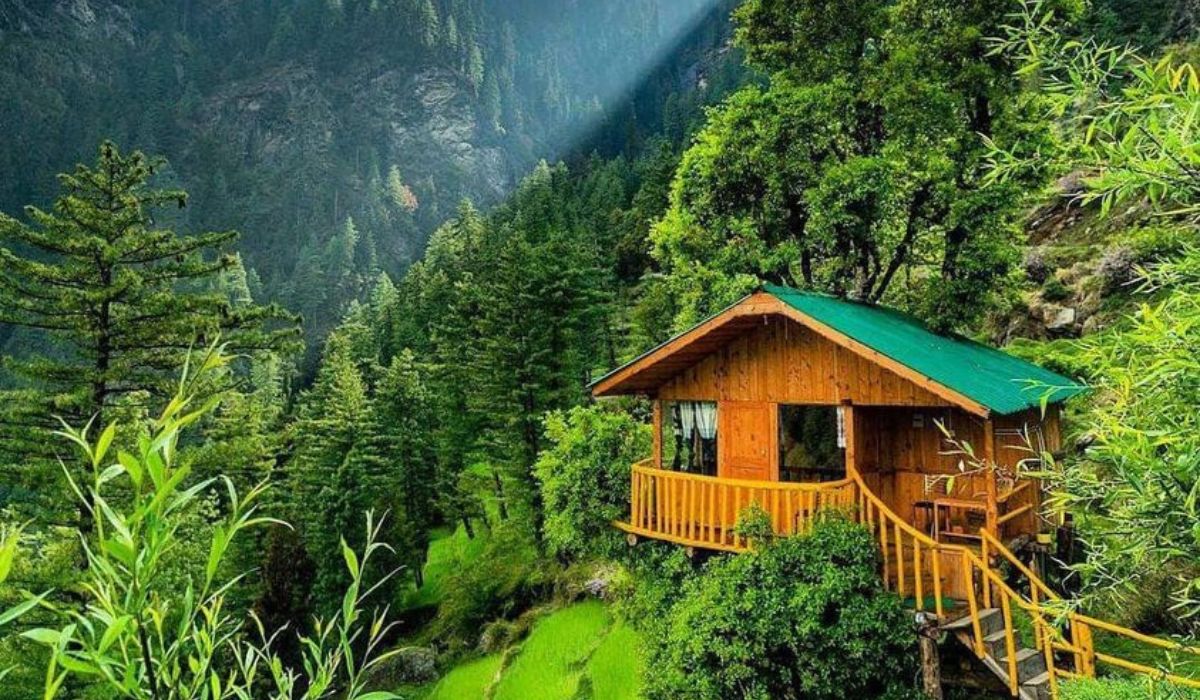Nestled in the heart of Himachal Pradesh, India, Tirthan Valley is a hidden gem that enchants travelers with its unspoiled beauty and serene ambiance. This picturesque valley is located within the Great Himalayan National Park (GHNP), a UNESCO World Heritage Site, offering a pristine natural environment that’s both captivating and rejuvenating.
Best Time to Visit:
The valley’s beauty morphs with each season, offering something unique throughout the year. The best time to visit is during the summer months, from March to June, when the weather is pleasant and ideal for trekking, fishing, and exploring the wilderness. Autumn (September to November) showcases vibrant foliage, making it perfect for nature enthusiasts. Winter (December to February) unveils a snow-laden landscape, attracting those seeking snowy vistas and a peaceful retreat.
Location:
Tirthan Valley is situated within the Great Himalayan National Park (GHNP), a UNESCO World Heritage Site. The valley gets its name from the Tirthan River, which gracefully meanders through the picturesque landscape.
Distance from Key Cities:
Chandigarh to Tirthan Valley: Approximately 270 kilometers, roughly a 7-8 hour drive.
Kullu to Tirthan Valley: A scenic journey of around 60 kilometers, taking about 2-3 hours by road.
Delhi to Tirthan Valley: The distance is approximately 500 kilometers, requiring a 10-12 hour drive, making it an excellent long weekend getaway from the bustling capital.
Attractions and Activities:
Great Himalayan National Park (GHNP): Explore the rich biodiversity of the park, home to diverse flora and fauna. Treks through the park offer mesmerizing views of snow-capped peaks, dense forests, and unique wildlife.
Serloskar Lake: A hidden gem, this pristine lake offers a serene ambiance surrounded by lush greenery. It’s perfect for a peaceful retreat or picnics.
Waterfalls and Scenic Treks: Tirthan Valley boasts numerous captivating waterfalls like the Rolla Waterfall, a popular trekking destination. The trek to the falls is refreshing, offering glimpses of the valley’s natural beauty.
Trout Fishing: The Tirthan River is famous for trout fishing, attracting angling enthusiasts from around the country. Fishing permits are readily available in the nearby villages.
History and Culture:
The history of the Valley is deeply rooted in local traditions and culture. The indigenous communities, mainly comprising the Kulluvi and Kinnauri people, have preserved their distinct cultural heritage. The valley was historically a trade route between the regions of Kullu and Kangra. Its serene environment has attracted spiritual seekers and travelers for centuries, leaving an indelible mark on its cultural tapestry.
In essence, Tirthan Valley offers an escape into the lap of nature, captivating visitors with its unspoiled beauty, diverse flora and fauna, and a sense of tranquility that rejuvenates the soul.
Conclusion:

Tirthan Valley stands as a haven for nature enthusiasts, adventure seekers, and those craving a serene escape amidst the Himalayas. Its diverse landscapes, rich biodiversity, and cultural heritage make it a destination worth exploring. Whether you seek trekking adventures, moments of tranquility by serene lakes, or a glimpse into local cultures, Immerse yourself in an unforgettable experience amidst nature’s embrace, where every moment lingers in your memories long after you’ve departed the Himalayan haven.
FAQs (Frequently Asked Questions):
Is Tirthan Valley accessible throughout the year?
Tirthan Valley is accessible year-round, but the best time to visit depends on your preferences. Summers are ideal for outdoor activities, while winters offer a snowy landscape. However, heavy snowfall during peak winter might affect accessibility.
Are there accommodations available in Tirthan Valley?
Yes, the valley offers a range of accommodations, including resorts, guesthouses, and homestays, catering to various budgets. Booking in advance, especially during peak seasons, is advisable.
What kind of activities can one indulge in at Tirthan Valley?
Discover the hidden gem nestled in the Himalayas. Immerse yourself in serene landscapes and untouched beauty, perfect for thrilling adventures and tranquil getaways.
The Great Himalayan National Park offers various trekking trails for all levels of trekkers.
How can I reach Tirthan Valley from nearby cities?
By road is accessible from Chandigarh, Kullu, and Delhi. Private taxis, buses, and self-driven cars are available. The nearest airport is Bhuntar Airport in Kullu, about 50 kilometers away.
Is Tirthan Valley suitable for families with kids?
Yes, This Valley is family-friendly. Its serene environment, accessible nature trails, and opportunities for outdoor activities make it an excellent destination for families.








